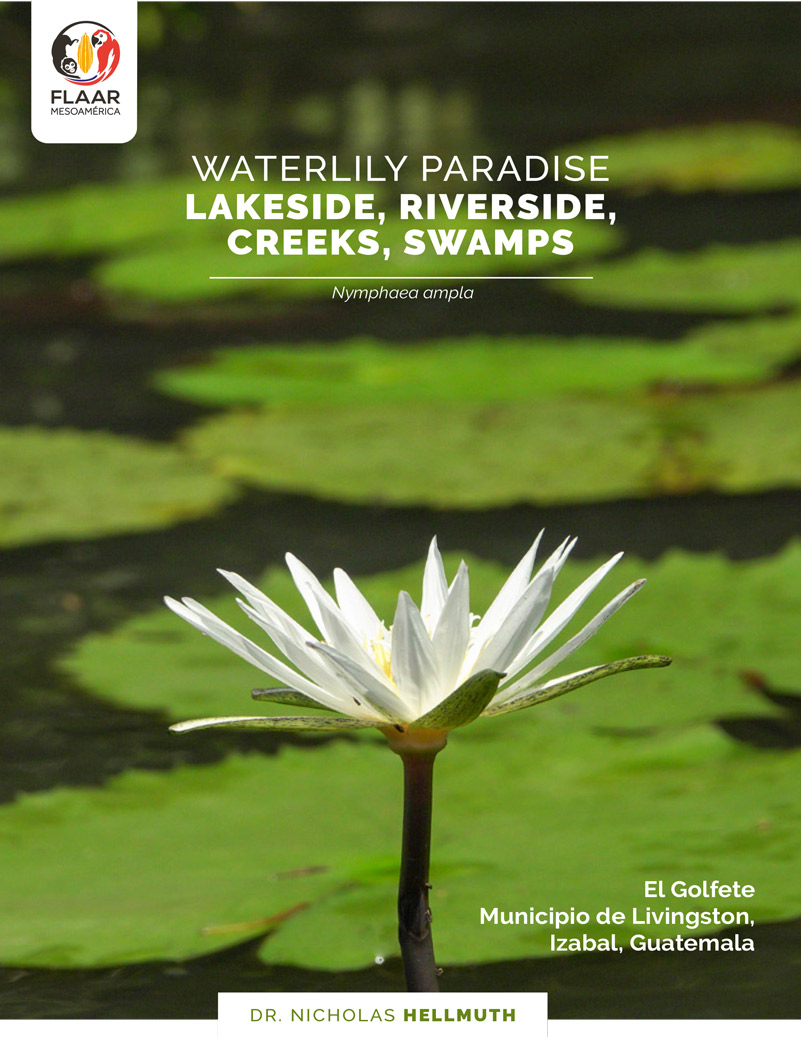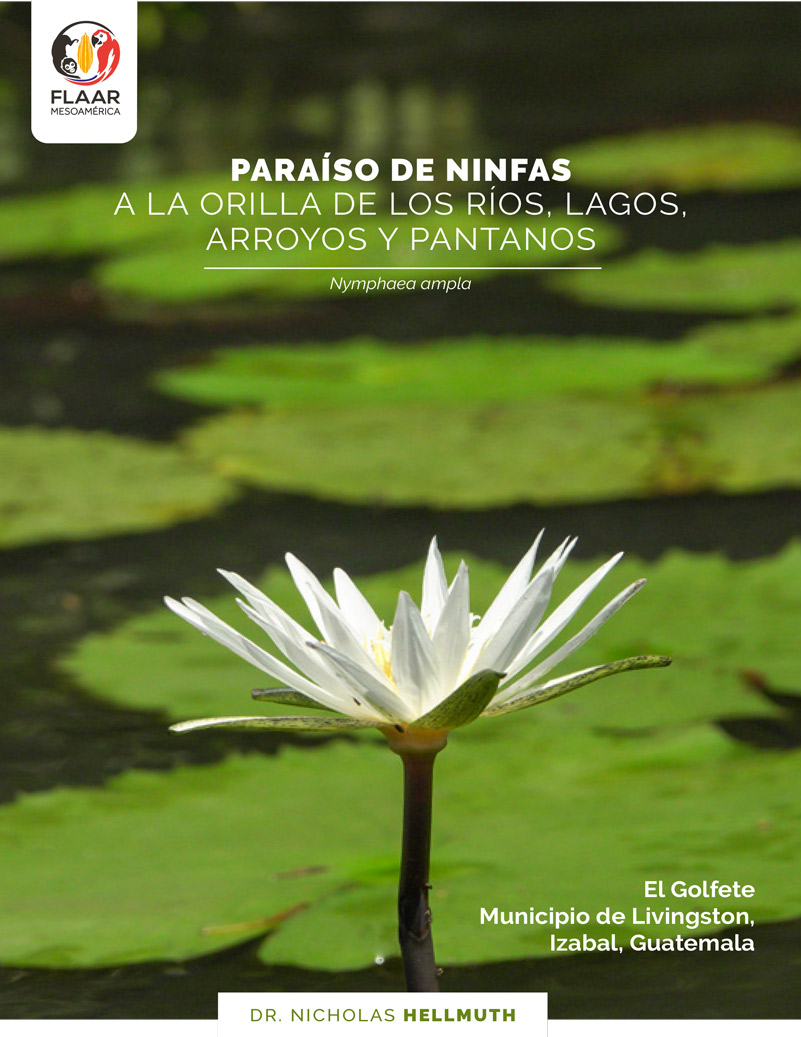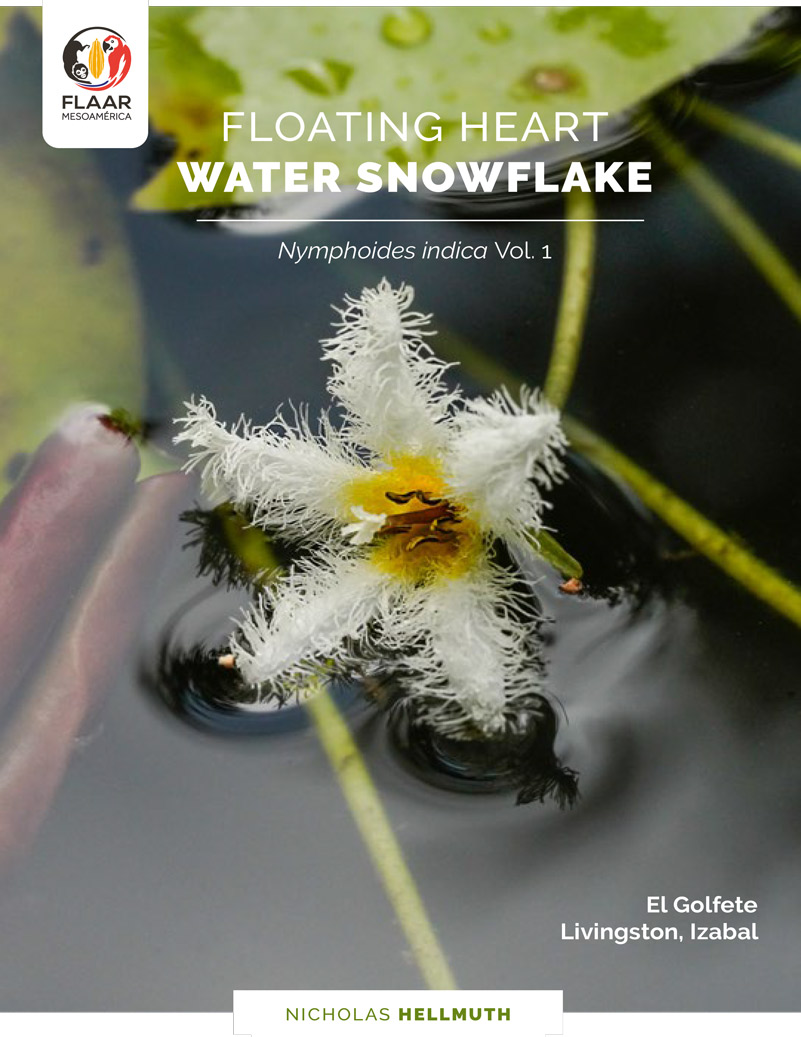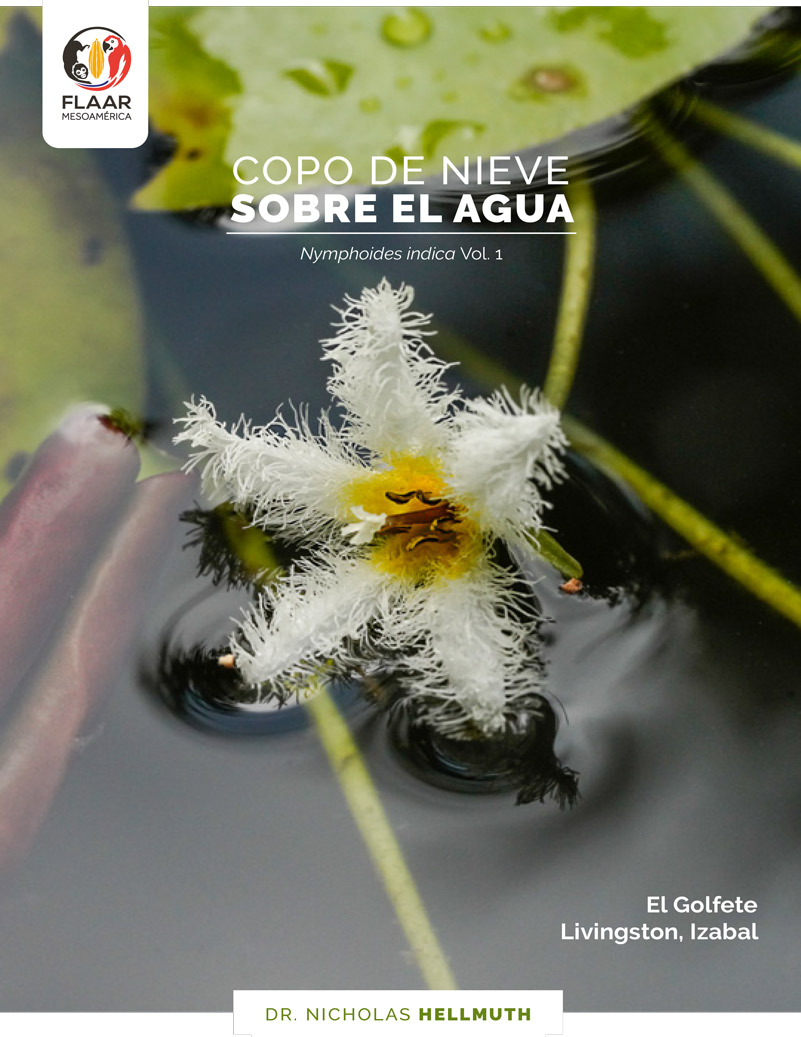Nymphaea ampla is a water lily I have been studying throughout Guatemala in rivers and lakesides since the 1970’s. But Nymphoides indica is a tiny flowered water lily that I have not previously noticed. We found thousands of this Nymphoides indica along the sides of lagoons and inlets of El Golfete part of Rio Dulce, Municipio de Livingston, Izabal, Guatemala during our field trip in mid-March 2020.
So we are now presenting one photo album on Nymphaea ampla and two photo albums and bibliography on Nymphoides indica of the same area.
Further research is needed: where else is Nymphoides indica found in Guatemala, Belize, Quintana Roo, Campeche, Tabasco, and Chiapas? Does Nymphoides indica prefer brackish water? A bit of salt water from the Caribbean flows into El Golfete, as do Bull Sharks and other creatures from the Caribbean Sea. But if Nymphoides indica is found in Peten, this means it can grow readily without brackish water.
Is a part of Nymphoides indica edible? And how can we find documentation from Aztec, Mixtec, Zapotec, Maya or other ethnohistorical or ethnobotanical studies that Nymphoides indica is or was indeed consumed by people of Mesoamerica. So far there is no evidence (that I yet know of) that this miniature-flowered water lily is a narcotic as is the larger Nymphaea ampla.
Equally crucial, is Nymphoides indica a plant that was present in Mesoamerica before the arrival of the Spaniards? Or, like many plants in wetlands, did it escape from gardens and spread into streams and lakes?
Posted August 6, 2020



















































































